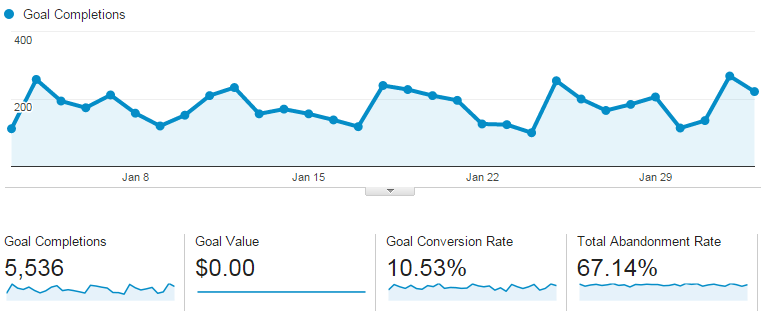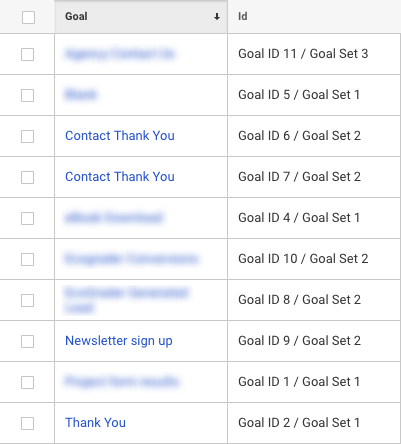Discover What Data Is Google Analytics Goals Unable to Track
Discover What Data Is Google Analytics Goals Unable to Track
Blog Article
Discover the Limitations of Google Analytics Goals: Introducing the Data Types That Remain Untrackable
As organizations increasingly depend on data-driven decision-making, recognizing the constraints of tools like Google Analytics becomes paramount. While Google Analytics Goals deal valuable understandings into user interactions, there exist information types that avoid tracking, positioning difficulties to a thorough understanding of individual actions. These untrackable information types increase inquiries about the accuracy and efficiency of the analytics data that organizations greatly count upon for their electronic techniques. Interested to uncover the covert unseen areas in your data evaluation procedure?
Insufficient Individual Trip Tracking
Incomplete individual journey monitoring within Google Analytics can prevent the capability to accurately evaluate customer habits. When the user trip is not totally tracked, there are voids in the information that prevent a detailed understanding of exactly how customers connect with a web site. This lack of insight can result in missed opportunities for optimization and improvements to the user experience.
One common issue with insufficient customer trip tracking is the failure to see the full path that users take before finishing an objective or leaving the website. Without this information, it is challenging to identify where users might be encountering barriers or friction points that prevent them from converting. Furthermore, incomplete tracking can cover the effect of specific advertising and marketing efforts or website modifications on individual behavior.
To resolve this limitation, it is important to establish proper monitoring devices within Google Analytics to capture the whole user journey. This might involve setting up occasion tracking, objective funnels, or using devices like Google Tag Manager to ensure that no important communications go unrecorded. By acquiring an extensive view of the customer journey, web site owners can make even more informed choices to improve user interaction and drive conversions.
Attribution Difficulties
Navigating with acknowledgment difficulties in Google Analytics requires a complete understanding of just how various touchpoints add to the general conversion procedure. Attribution difficulties occur from the complexity of contemporary consumer journeys, where customers communicate with several networks prior to transforming. Google Analytics offers different acknowledgment versions like first touch, last touch, and linear, each supplying a different point of view on just how credit rating is designated to touchpoints along the conversion course. These models might not always precisely mirror the true influence of each touchpoint on the conversion.
One typical acknowledgment obstacle is the difficulty in connecting conversions to the appropriate source, especially in instances where individuals interact with numerous channels prior to converting. Furthermore, cross-device tracking postures one more acknowledgment challenge, as users frequently change between tools during their trip, making it challenging to track their communications effortlessly.
Offline Conversions
Given the obstacles connected with associating conversions properly in online networks, the dimension of offline conversions presents a substantial opportunity for marketing professionals seeking an extra comprehensive understanding of their consumers' journey. Offline conversions describe activities that customers take in the physical globe, such as making acquisitions in brick-and-mortar shops or over the phone, participating in occasions, or engaging with published products - what data is google analytics goals unable to track. These conversions are essential for companies that run both online and offline, as they supply useful insights into the performance of marketing campaigns throughout different touchpoints
Tracking offline conversions commonly posed a substantial difficulty for marketers, as it was testing to connect these activities back company website to particular on the internet interactions precisely. With improvements in modern technology, such as the assimilation of CRM systems, unique identifiers, and coupon codes, companies can now bridge the space between online and offline data to get an extra alternative view of consumer behavior. By effectively gauging offline conversions, marketers can optimize their strategies, allocate sources extra successfully, and inevitably enhance the overall customer experience.
Cross-Device Tracking
Cross-device monitoring plays a vital role in comprehending the interconnected nature of consumers' digital communications across numerous tools. In today's omnichannel globe, where users flawlessly switch over between smartphones, tablet computers, and desktop computers, tracking their habits throughout these tools is crucial for marketing experts to acquire a thorough view of their consumer journey.

Additionally, personal privacy problems and guidelines such as GDPR and CCPA have further complex cross-device tracking. With users requiring more control over their data and raised limitations on monitoring technologies, online marketers should discover privacy-compliant and ingenious methods to link customer communications throughout tools.
Dynamic Content Interaction
Comprehending individual interaction with dynamic material is crucial in maximizing electronic advertising techniques for enhanced audience communication. Dynamic web content describes web site aspects that alter based on user actions, preferences, or other factors, supplying a tailored experience. Tracking user communications with vibrant content postures challenges for typical analytics devices like Google Analytics.
While Google Analytics can track fundamental interactions like clicks and page sights, it may have a hard time to capture even more nuanced interactions within vibrant material. what data is google analytics goals unable to track. Metrics such as time invested in specific dynamic aspects, float activities, or interactions within pop-ups are usually not quickly measurable utilizing basic tracking techniques. This constraint prevents marketing professionals' ability to completely grasp exactly how Visit This Link individuals are engaging with dynamic web content and tailor their methods appropriately

Final Thought
In verdict, Google Analytics goals have constraints in tracking incomplete user journeys, attributing conversions precisely, recording offline conversions, tracking cross-device communications, and gauging dynamic web content engagement. These constraints highlight the significance of exploring extra monitoring techniques and devices to gain an extra detailed understanding of individual behavior and conversions beyond what Google Analytics can offer.
While Google Analytics Goals deal useful insights into user interactions, there exist information types that avoid tracking, posturing difficulties to a comprehensive understanding of user behavior.Insufficient individual trip monitoring within Google Analytics can impede the capacity to precisely examine individual habits. When the user trip is not totally tracked, there are voids in the data that avoid a comprehensive understanding of exactly how users interact with a website.One common concern with insufficient user journey monitoring is the failure to see the full path that customers take in the past completing a goal or leaving the website. By acquiring an extensive view of the customer visit this site trip, internet site owners can make even more informed decisions to boost individual engagement and drive conversions.
Report this page